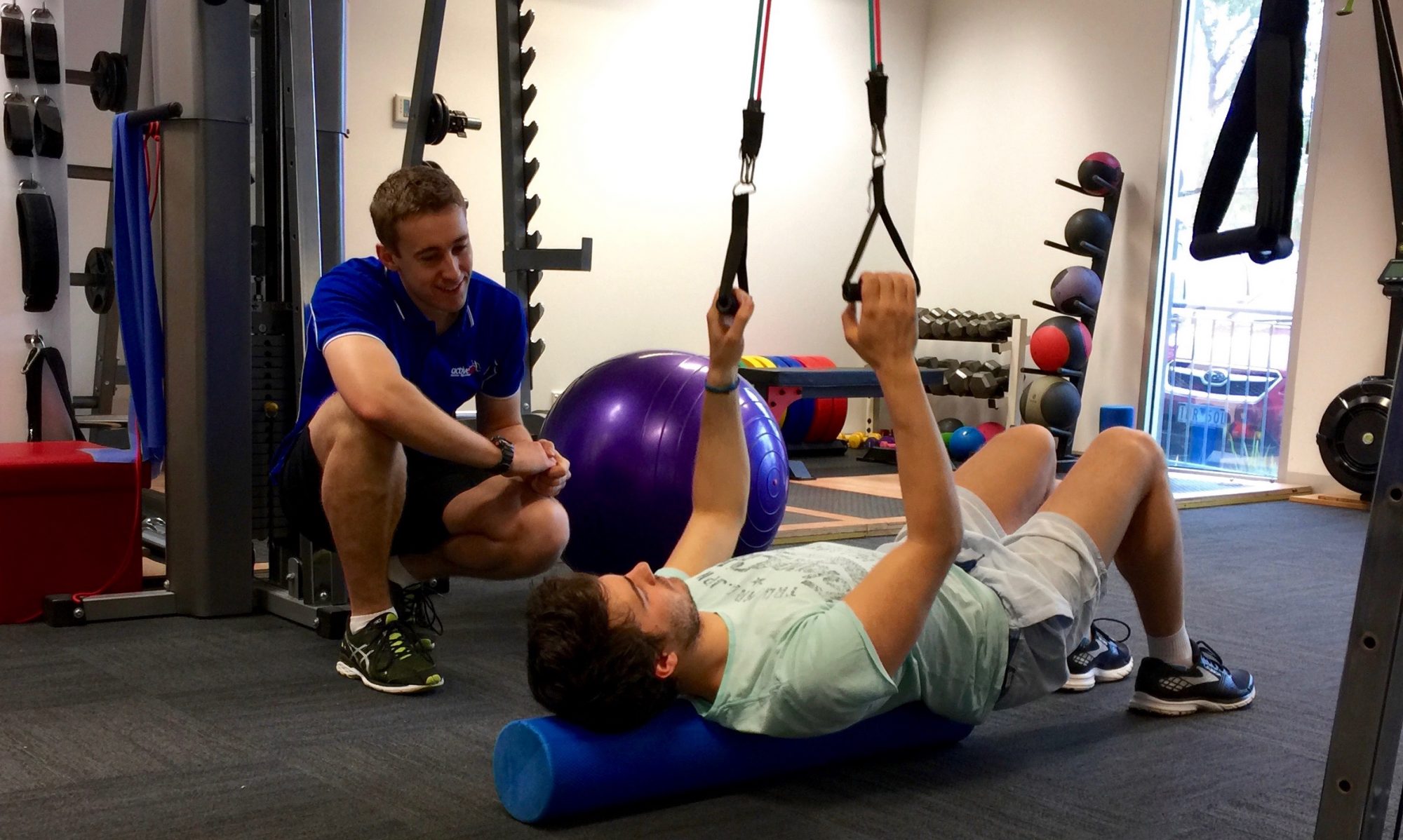Exercise Rehabilitation for ankle sprains:
Did you know that the ankle joint is the second most likely to be injured? Up to 70% of the general population have or will experience an ankle sprain in their lifetime!
Ankle sprains are the most common injury in the ankle joint. Sprains occur when the ankle moves outside its normal range of motion which can result in sprains or tears of ligaments in the ankle. These ligaments connect bones to other bones and act as a stabilising structure for joints. The most common type of ankle sprains are lateral (rolling outward) injuries, which are around 85% of ankle sprains.
Ankle sprains are common in sports such as basketball, netball and football to name a few. Often ankle sprains will result in swelling, bruising and the inability to be able to weight bear through the injured ankle. The ankle can be quite complex with several ligaments and tendons, but one of the major issues in regards to ankle sprains, is the high rate of re-injury. Ankle injuries, especially lateral ankle sprains after the first year post injury, have a two-fold increased risk of re-injury. Therefore, exercise will play a crucial role in rehabilitation, but also prevention of further sprains and ankle injuries.
So what are the best types of exercises for ankle sprain rehabilitation?
Once inflammation and pain are controlled, the focus should be on these key aspects:
Range of motion exercises: Range of motion exercises play an important role in the initial stages of an ankle sprain. This can be either passive, assisted active, and active range of motion within a pain free range and can be made more challenging by including resistance bands to help improve strength. Early exercises such as ankle circles, alphabets and moving through the ankle joint plane of motion are often completed early in rehabilitation prior to progressing to strength exercises.
Balance exercises: A key component of rehabbing an ankle injury, balance exercises are a must for ankle rehab. The ankle joint and ligaments are responsible for proprioception, which is the body’s understanding of where it is in space. Both dynamic and static balance are important for reducing the risk of re-injury. Exercises such as single leg balance, progressing to different surfaces, creating obstacle courses using different surfaces, the rocker/balance board will all help improve proprioception. Proprioception training has shown to reduce the incidence of ankle sprains by 35%.
Strength exercises: Strength exercises play an important role in reducing the risk of re-injury and to assist with returning to pre-injury levels. Strengthening the muscles that support the lower leg, foot and ankle will provide more ankle stability and help address any deficits in strength as a result of the ankle sprain.
Your Exercise Physiologist can help you create a plan and assess your progress with your ankle sprain. It’s important to note that each person is different, and may be at different stages of their rehabilitation progress. Your Exercise Physiologist will be able to guide you through this process alongside any other allied health professional as part of your recovery.
Sources:
Wesam Saleh A Al Attar, Ehdaa H Khaledi, Jumana M Bakhsh, Oliver Faude, Hussain Ghulam, Ross H Sanders,Injury prevention programs that include balance training exercises reduce ankle injury rates among soccer players: a systematic review,Journal of Physiotherapy,Volume 68, Issue 3,2022,Pages 165-173 (https://doi.org/10.1016/j.jphys.2022.05.019)
Physiopedia, n.d. Ankle Sprain https://www.physio-pedia.com/Ankle_Sprain


